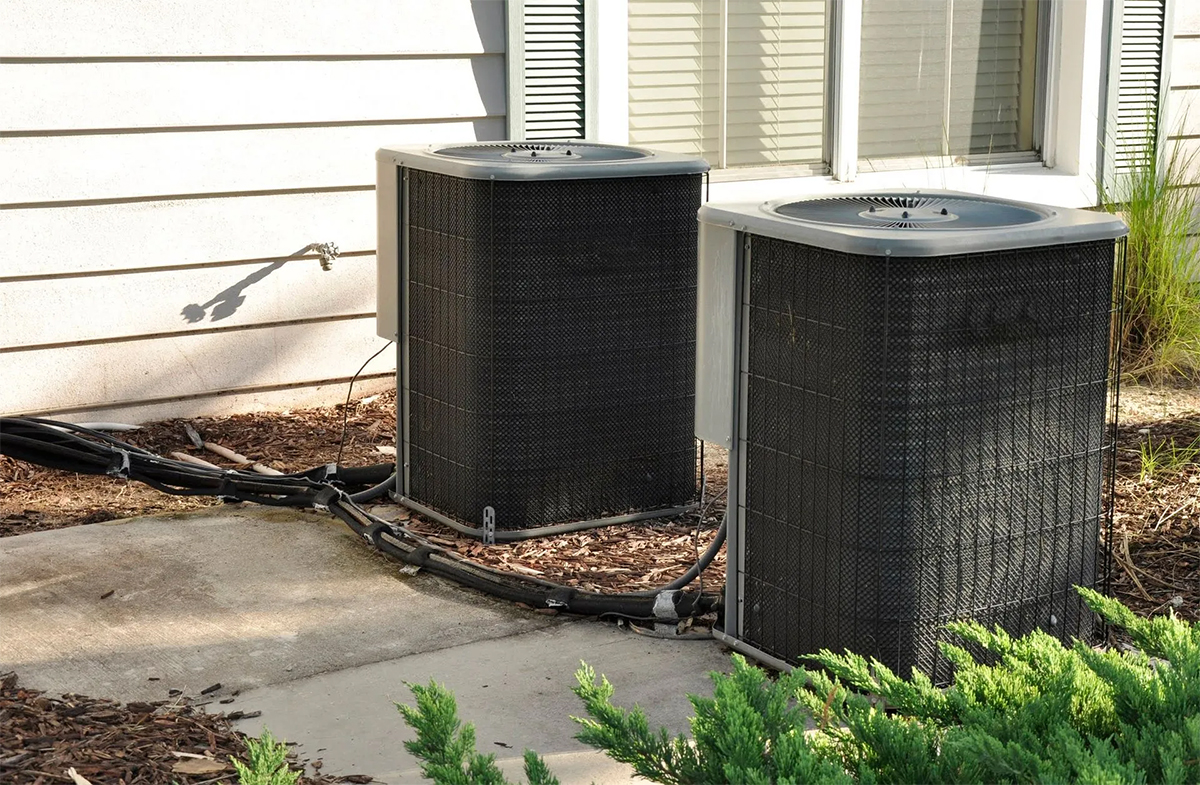Does your HVAC upgrade include a new central air container? If this is your first experience with central AC, take a look at what you need to know about the system, installation, maintenance, and use.
What Is a Central Air Conditioner?
How does this type of AC system differ from your other home cooling options? As the name implies, this system has one central unit that cools the entire interior space. Think of the central air conditioner as similar to a forced air heater. But instead of forcing hot air through a series of ducts and into vents, the air conditioner pushes cooled air into your home.
Unlike window units and ductless mini-split systems, the central air conditioner does not use a zoned or space-by-space approach. This means it will cool all vented spaces in your home—including those that you never or rarely use. It also does not give you the ability to control the temperature in individual spaces. Instead, you will use one thermostat to raise and lower the indoor air temperature setting.
What Does Central AC Installation Require?
While you might have no problem placing and plugging in a window air conditioner, a central system requires help from an HVAC professional. This type of system has complex ventilation and electrical needs that make it challenging (at best) for a novice DIYer to install. Failure to correctly install a central air conditioner could pose a serious safety risk, damage the system, or result in significant cooling and energy losses.
If your home doesn’t have forced air heat, it may not have ducts. Without ducts, a central system can’t push cooled air throughout your home. Even though ducts are a necessary part of this type of system, it is possible to install central air conditioning in a home without pre-existing ductwork.
Before the HVAC contractor can install the central indoor unit or the exterior compressor, they will need to add air ducts. This process may include some interior demolition and reconstruction. Ducts typically sit inside walls or on top of ceilings. This type of setup hides the ducts from view. The contractor may need to break through some wall spaces or ceilings to place the ducts. The specific renovations necessary depend on your home and the system itself.
How Should You Maintain Your New Air Conditioner?
The AC installation isn’t the last time that you will see the HVAC contractor. Even though your system is brand new, you will still need to schedule regular post- or pre-season maintenance appointments. Routine maintenance can extend your system’s lifespan, increase energy efficiency, and keep your home cool and comfortable all summer long. It can also help to improve indoor air quality. This can reduce allergies and help household members with respiratory conditions to breathe easier.
The contractor may recommend a post-season checkup for your new air conditioner or, depending on the installation date, they may suggest that you wait until next season for a pre-summer appointment. The post- or pre-season visit should include a system inspection, cleaning, and filter change.
How Should You Care for Your New Central System?
Most new central air conditioners require very little regular care. You won’t need to constantly check or clean the system or the air ducts. But this doesn’t mean you can ignore your new air conditioner.
To maximize the system’s cooling potential and reduce the risks of premature wear and damage, change or clean the filter regularly and choose the best setting for the thermostat. While you do want to maintain a constant cool comfort level inside, you don’t need to keep the thermostat at one temperature. A seven- to 10-degree change for at least eight hours daily can significantly impact your electricity costs, notes the U.S. Department of Energy.
Do you need to schedule an AC installation or maintenance? Contact D & R Service, Inc., for more information.



